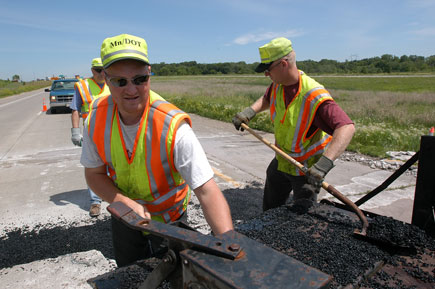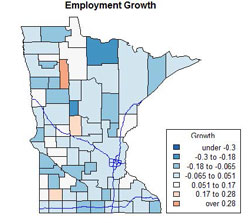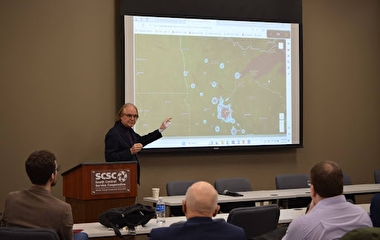A new study from U of M researchers found that long-term transportation investments contribute significantly to employment in Minnesota counties, particularly rural ones.
The study, led by Associate Professor Zhirong (Jerry) Zhao of the Humphrey School of Public Affairs, compiled a dataset about county business patterns in Minnesota during 1995–2010. The data include the number of county business establishments, jobs in Minnesota counties by sector, and the amount of annual payroll.
The team then linked the data of county business patterns to data of transportation expenditures on local roads and trunk highways. Key findings of the analysis include:
- A 1 percent increase in local road capital within a county is associated with a 0.007 percent increase in the employment rate of the county, holding constant various socioeconomic factors.
- A 1 percent increase in trunk highway capital in surrounding areas is associated with a 0.008 percent increase in the employment rate of a county, again holding constant various socioeconomic factors.
“Most previous research focused only on trunk highways,” Zhao says. “By differentiating between both, we can compare the relative effectiveness of the two.”
According to the findings, the overall relationship (across all counties) is that the employment rate increases with trunk highway and local road spending. However, different areas are affected differently by investments.
For example, in counties belonging to micropolitan areas (such as Winona and Beltrami), the results are mixed. “Their employment rates are positively affected by local road spending within their counties, but seem to be negatively affected by trunk highway spending in surrounding counties,” Zhao says. “This is probably due to economic competition intensified by roadway improvement.”
The evidence was insufficient to make conclusions about counties belonging to metropolitan areas. Only rural counties were positively affected by both types of investment, he says.
The analysis also found a negative and significant correlation between trunk highway investment and payroll in rural areas. “It could be that trunk highways enable people living in rural counties to seek better paying jobs in other counties,” Zhao says.
“There has been a long-standing question about the importance of transportation investments as they relate to employment, particularly in rural Minnesota counties. This work explored that connection and confirms that there is a positive linkage between long-term transportation investment and job creation,” says Ken Buckeye, project manager of the Transportation Finance Advisory Committee at the Minnesota Department of Transportation (MnDOT). “These results have important policy implications for planners and decision makers regarding where local road and trunk highway investments might be made to achieve greater benefit.”
“This research helps substantiate the general thinking that good roads are good for businesses, especially so in the rural areas,” says Bruce Hasbargen, county engineer of Beltrami County and the technical liaison for the project.
The project was sponsored by the Minnesota Local Road Research Board and MnDOT.





